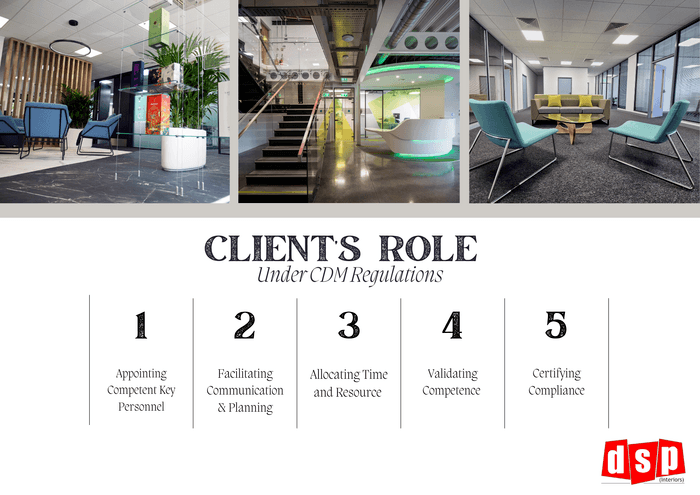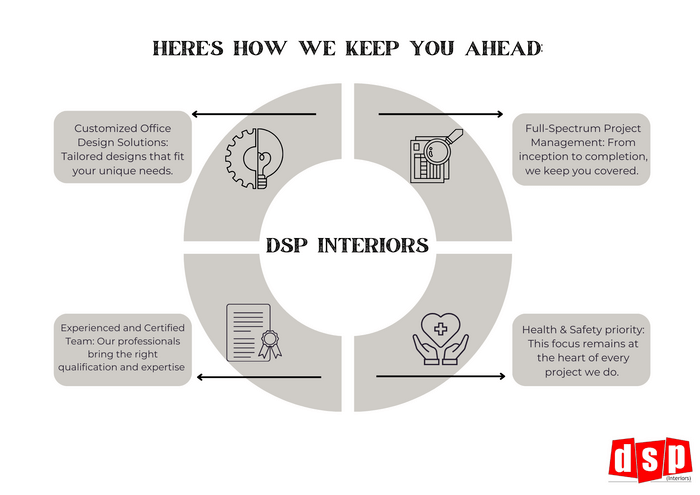As the construction industry continues to evolve, building regulations are constantly being updated to improve safety, sustainability, and quality standards. For anyone involved in a building project, from office renovations to large-scale construction, staying up to date on these changes isn’t just helpful – it’s essential.
For clients, having a solid understanding of the key roles and responsibilities outlined by these regulations is crucial. Equally important is ensuring the designers and contractors you work with are experienced and up to date on current regulations. A project that fails to comply with regulations can result in unnecessary delays, financial setbacks, or even the need for a costly refurbishment.
So, what are the building and CDM regulations, and how can you, as a client, stay ahead of the game in your renovation or construction project? Here we explore the steps to ensure your project stays compliant and successful.
What are CDM regulations?
Construction Design and Management (CDM) regulations are, in essence, the main set of legal requirements put in place to manage health, safety and welfare during construction projects in the UK.
These rules govern construction and design projects across all levels, from new builds and demolition to refurbishment, repair or maintenance projects.
Covering a wide range of projects—from new builds and refurbishments to repairs and demolitions—these regulations ensure that every party involved adheres to high safety standards, creating a safe environment for workers and fostering sustainable construction practices.
What is the Client’s Role Under CDM?
As a client, your role in maintaining project safety and compliance is pivotal. Your responsibilities extend beyond funding and project vision; they include ensuring that all work complies with CDM guidelines to protect everyone involved. Here’s what this entails:
Neglecting these obligations can lead to fines, project delays, and potentially serious safety incidents. Recent changes in the Building Control process brought about by the Building Safety Act have sought to highlight the importance each key “Duty Holder” plays. You, the client, along with the Principal Designer and Principal Contractor, will need to sign a separate declaration at the end of the project on practical completion. This written declaration by the client confirms that to the best of the client’s knowledge, the works comply with the applicable requirements of the Building Regulations. Without a full set of declarations, a final completion certificate cannot be issued.

Why Competency is Key
Construction can be complex and dynamic, especially with regulatory updates becoming more frequent. Working with a team well-versed in CDM regulations is essential, which is why aligning with a competent firm, like DSP (Interiors) Ltd, is a sound decision.
True competency under CDM includes:
- Proper Training and Certifications: Ensuring everyone on the team meets qualification standards.
- Proven Industry Experience: An experienced team can better anticipate and solve potential challenges.
- A Focus on Health and Safety: A spotless safety record is essential; no compromises here.
Why Choose DSP (Interiors) Ltd?

At DSP, we understand the importance of regulatory compliance for our clients. Our role is to remove the complexity and stress, from design through to fit-out, so your focus can remain on the project’s vision.
When you choose DSP Interiors for your fit-out or refurbishment, you’re choosing a firm that meets today’s high standards while anticipating future changes. Our Safe Contractor and CHAS Principal Contractor reaccreditations further validate our commitment to health and safety excellence. Our standard of workmanship is also regularly assessed by the external industry body, the FIS; in fact, we have also been the recipient of an FIS Contractors Award on more than one occasion.
Curious about what we can do for your business? Get in touch at sales@dsp-solutions.co.uk or call us at 01332 291 617.






